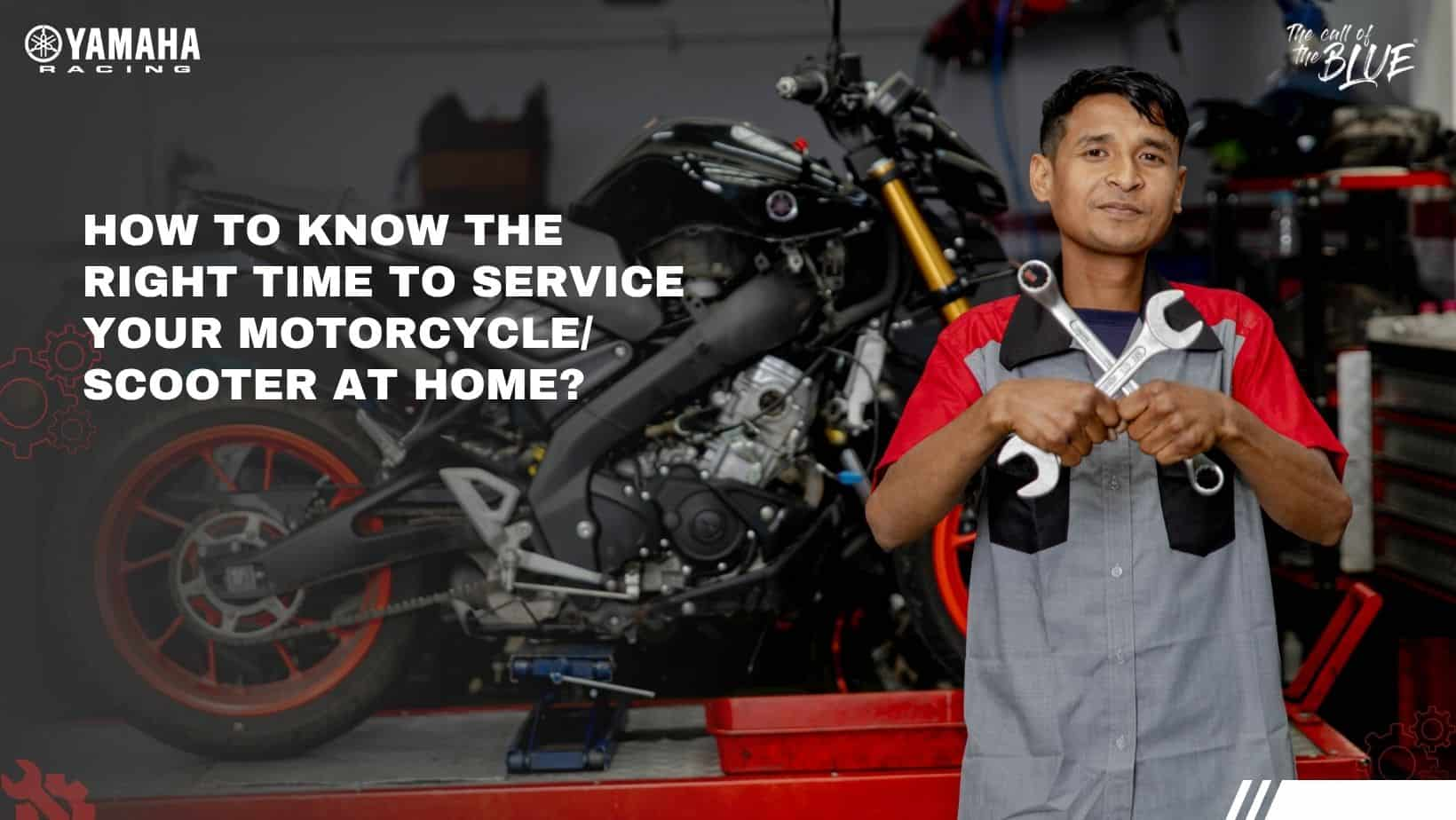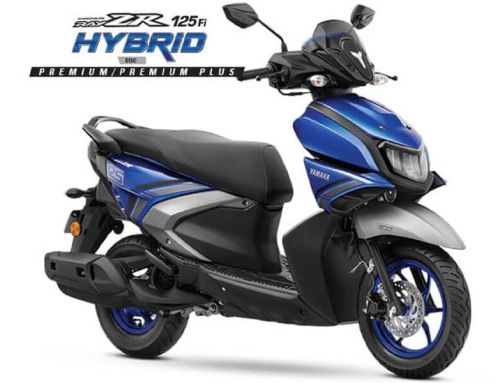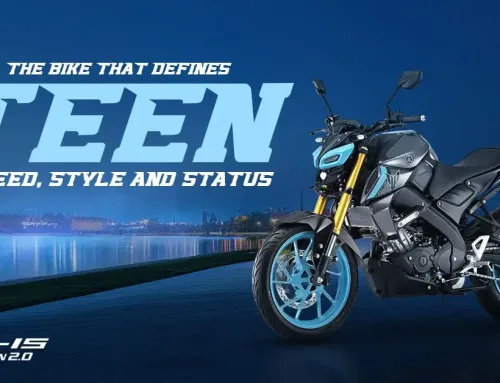
Just like how you rely on your motorcycle or scooter to commute your way across Nepal’s busy roads and tough terrains, you need to keep it in prime condition through regular servicing. Knowing the right time to service your motorcycle or scooter at home saves you both time and money and prevents unexpected breakdowns. We lead you through determining key indicators and servicing intervals according to your road condition and riding behavior in this detailed guide. Monitoring them closely keeps your two-wheeler at its best operating level while extending its lifespan.
Referring to your motorcycle service manual:
Having your motorcycle servicing schedule at your command can contribute a lot to its performance and longevity. All models also have predetermined servicing routines like oil change, chain adjustment, and brake service depending on how its engine and components have been engineered and produced.
Especially in Nepalese roads where compound road condition, humidity, and dust are a daily occurrence, strict compliance with such schedules gives your vehicle a respite from excessive wear. This can be found in your owner’s manual, and having this knowledge means having a definite idea when to intervene before minor issues turn into major, costly repairs.
✓ Manufacturer’s Instructions and Their Importance
Manufacturers develop service schedules according to massive tests and actual data specifying when parts or fluids are to be replaced for best performance and safety. Following them ensures warranty compliance while keeping fuel efficiency and emission within regulations. For Nepalese motorcyclists, local conditions like dusty mountain roads and monsoon humidity are considered while developing the schedules to reduce breakdowns and improve day-to-day reliability.
✓ Factors That Impact Your Service Intervals
Intervals are not standardized; they are a factor of your style and riding conditions. Harsh stop-and-go riding, country riding in dust, a lot of highway cruising, or a lot of idling affect parts wear. The degree to which your motorcycle is stressed depends upon how much maintenance must be done. Feeling this deviation enables you to direct your service regimen according to your own priorities, keeping your motorcycle smooth and reliable.
- Stop-and-go driving causes wear and tear on clutches for city drivers
- Those who drive on dusty country roads require more regular air filter and chain maintenance
- Highway riders tend to have more miles but must check tire wear and oil level.
- You can adjust service intervals beyond the manual’s recommendation by being aware of your riding conditions.
Within Nepal’s variable topography and weather, your motorcycle withstands stresses that speed wear in unexpected ways. Monsoon humidities speed up corrosion within metal parts, while altitudes affect engine tune-up along with combustion in the fuel. Stop-and-go traffic at traffic lights in cities like Kathmandu, speed up brake pad wear, while dusty trail riding up country necessitates chains to get oiled more frequently.
Tailoring your service schedule according to these conditions not only prevents breakdowns, but it also ensures maximum fuel efficiency and safety. Your ability to understand how these variables react to your riding makes servicing a preventive approach.
-
- Monsoon weather demands frequent checking of brakes and electrical contacts
- Mountain riding requires careful attention to clutch use and cooling system function
- Urban driving subjects brakes, clutch cables, and tyres to increased stress
- Noticing these influences will enable you to modify your maintenance activities for the best outcomes
Signs That You Need to Perform DIY Servicing:
Overlooking initial indicators your motorcycle or scooter require attention can result in costly repairs and safety compromise. Catching minor symptoms such as unusual engine noises, poor engine response from the throttle, or soft brakes enables you to get them repaired earlier.
Routine checks on fuel efficiency and oil leaks, or tire wear, make you aware of serious issues before they occur. Whether cruising traffic-congested Kathmandu roads or touring mountainous trails, keeping your eye out for such symptoms makes it possible for you to keep going at your best by performing timely do-it-yourself work.
✓ Identifying Serious Warning Signs
Your vehicle can also begin emitting metallic squeaks or rattles while idling or accelerating, suggesting engine or brake problems. Stalling most times, or harder than usual to start, can be a sign of worn-out spark plugs or fouling of the fuel system, a common problem in Nepal’s weather conditions. Note any smoke from your exhaust that varies in color or quantity, it usually signifies inefficiency in combustion. Listen out for unusual noise while stopping or vibrations, suggesting worn-out brake pads or misaligned wheels, and have them corrected right away to prevent accidents.
✓ Assessing performance gaps
Poor performance in acceleration or difficulty driving up slopes in hilly terrain can signify your motorbike engine performing less than ideally due to dirty air filters or faulty spark plugs. Below optimal levels of 40–45 km/l for scooters, or 30–35 km/l for bike, fuel economy can be a sign of carburetor or injector faults. Stalling while driving or irregular idle usually occurs prior to severe engine faults, fixable by DIY prior to consultation from experts.
More investigating performance discrepancies, you’ll see how your vehicle feels when hauling a passenger, climbing a grade with a load, etc. Roughly slipping gears indicate faulty linkages in your transmission, worsening if not adjusted or oiled in a timely fashion. Keeping a watchful eye on your vehicle’s response allows you to spot wear-and-tear early, so you can replace items like spark plugs, air cleaners, or brake pads at home yourself, conserving both your funds and your time at Nepalese garages.
Simple DIY Checks and Techniques:
Having a routine with a regular use of certain devices and methods can revolutionize how you can service your motorcycle or scooter at your convenience. Routine checks not only eliminate unexpected breakdowns, but also keep your vehicle performing at its optimal level despite Nepal’s variable road conditions. Regular inspections with quality tools make upkeep a piece of cake, both for your time and your purse.
1) Visual and Physical Tests to Conduct
Inspect for signs of leakage, wear, and rust before using. Examine by tracing your hand along the chain for stiff or loose links, brake pad wear, fraying or cuts on wires and cables. Scan for unusual frame cracks or loose bolts, especially after rough rides over Nepal’s typical uneven trails. These visual and touch tests alert you ahead of time so you can address problems beforehand.
2) Basic Tools for Home Maintenance
An appropriate minimal toolkit would include a torque wrench for accurate tightening of bolts, a local condition-specific tire pressure gauge, a chain cleaner, and a Nepalese climatic condition-specific lubricant. In addition to these, quality screwdrivers, hex keys, and a multimeter would help you resolve electrical faults common with humid climates.
Finish your kit with a service stand to hold your bike steady while you are working with it and a parts tray to keep your nuts and bolts from going AWOL on rough ground. In Nepal, with constant exposure to dirt and dust, a good air blower or compressed air can be extremely useful in clearing out tricky spots. Put them together, and you’ll be well-prepared to do your regular servicing with confidence.
3) Simple Maintenance Tasks You Can Do Yourself
A lot can be done with your motorcycle/scooter at home, avoiding the annoyance of multiple visits to the mech while keeping your vehicle in its best form. Fluid refilling, tire pressures, and air filter change are a few minor aspects going a long, long way towards hassle-free riding across Nepal’s varying terrains. Routine servicing done by you makes you realize any odd noise, leakage, or wear before they turn into major problems, rendering your two-wheeler more reliable and safer without creating a dent in your pocket each time.
4) Regular Services You Can Provide
Simple tasks like oil change, chain oiling, and brake adjustment are within your capabilities to have done at home with minimal equipment. Oil change between 2,000 to 3,000 kilometers every now and then keeps your engine tidy and cooling efficient, a necessity on Nepal’s rough roads and at altitudes.
Fuses can be replaced, loose nuts tightened, bulbs changed, and battery terminals cleaned from corrosion. Regularity of this general servicing keeps your vehicle going without excess dependency at workshops.
5) Cleaning Up and Remaining Efficient Tips
Clean equipment and a neat working area reduce safety risks and make any work you do more efficient. Good work practices like keeping grease wiped from your hands, putting dirty tools away in a box, and checking a sheet with each service call can reduce time wasted and prevent errors.
Cleaning your motorcycle engine and frame periodically to keep grime from building up, plugging up passageways, and corroding parts is also a good practice. Turning each one of these little housekeeping procedures into a habit can be a significant factor in maintaining long-term vehicle health.
Cleaning a few minutes after you have serviced your motorcycle or scooter instills efficiency and safety into your next service sessions. Cleaning your workshop removes slippery spills and scattered bolts, which can harm you or lose small parts. Categorizing your tools by use and function makes it possible for you to work more efficiently through services, while tracking your tools from time to time and replacing worn-out tools provides precision workmanship as well as prevents wear to parts.
Cleaning your motorcycle itself, especially engine bay and underbody, keeps grime from rusting or gummifying up working parts, especially crucial to resist Nepal’s seasonally rainy conditions and dust. Treating servicing as a mechanical-organizational undertaking ensures you utilize maximum value from your time as well from your two-wheel vehicle.
-
- Keep your tool set clean and organized to find what you need at once.
- Put absorbent mats beneath them to contain spills and protect your floors.
- Use small jars or magnet plates to keep nuts and bolts from getting lost. Arrange a quick workshop tidy-up after every maintenance session to prevent accumulation.
- With this tidiness habit as a form of upkeep, you are prepared for any repairing issue.
Recording Your Bike’s Maintenance:
Keeping a close record of your motorcycle or scooter condition means you can see how it performs over time and identify emerging problems ahead. Keeping track of regular maintenance like oil change, brake inspection, and tire inspection with any unusual detailed notes gives a record of your vehicle’s health.
It reveals trends, such as how brake pads would last for 3,000 kilometers or how often a chain would need to be adjusted every month, so you can get preventive work done and are not surprised by Nepal’s varying road conditions.
✓ Importance of a Home Service Record
Maintaining a records book for your home service makes general recollections into certain facts you can rely upon. It guides you on when to perform certain service depending on how often it had been done, rather than guess by how your engine feels. A well-kept record can authenticate your warranty claims and assist potential buyers in judging how well a motorcycle had been serviced. On rough roads in Kathmandu Valley or terrains, written records proving regular servicing can be invaluable.
✓ Constructing and Maintaining Your Journal
Your record book can be a phone app or a piece of notebook paper, to note your dates, kilometer readings, work completed, and items replaced.
Put in oil change, filter services, inspections of spark plugs, and any strange noises upon riding. Get them written down as quickly after the job gets completed so nothing slips one’s mind and review your record book every week to see any trend requiring one’s attention.
Selecting a format easily at hand ensures you’ll keep up-to-date records. You might use a phone sheet or a notepad in your garage. Leave room for ‘Date,’ ‘Mileage,’ ‘Work Done,’ ‘Parts Used,’ and ‘Remarks.’
Over time, the log acquires a customized approach to servicing, sensitive to your motorcycle’s performance on Nepal’s varying road conditions, caked countryside trails to traffic-choked city roads. The customized approach increases reliability by far, extending your vehicle’s lifespan.
✓ Discovering When to Call in Experts
Certain repair and servicing activities need more than general knowledge, for example, engine overhauling, advanced diagnosis, or fuel system adjustments. If your bike starts developing habitual misfires, unusual noises, or fluid leakage, it’s now time to seek the services of a specialist.
Attempting to perform advanced repairs with unqualified hands or superior quality equipment can lead to added costs or even safety risks. Your certified mechanic uses his or her diagnostics kit to diagnose problems not detected by a general checkup so you can avert further complications and have your motorcycle provide consistent driving performance even on Nepal’s uneven roads.
✓ Understanding the limits in DIY servicing
Simple tasks like tire pressures or air filter change are possible in a home, while brake bleeds or clutch adjustments in a novice’s hands can be dangerous to safety. Without a correct torque value and right equipment, parts can be damaged, leaving your motorcycle’s performance at risk. Some models also have closed units or require software updates available only from authorized shops. Knowing when a job may be beyond your capabilities conserves time and money, and from mistakes caused by incomplete or improper repairs.
Benefits to Using MAW’s Authorized Service Network:
Having your motorcycle serviced at Yamaha authorized service centers ensures your motorcycle is serviced by trained technicians who are familiar with your motorcycle model and your motorcycle’s particular service requirements.
They employ original spare parts and manufacturer-recommended methods, and each job complies with quality specifications. The service centers provide helping hands with warranty assistance and documentation records, providing a boost to your motorcycle’s resale value.
With more than 10 service points spread out across Nepal, servicing is easily accessible wherever you are, city roads in Kathmandu or remote hill roads.
Along with experienced mechanics, MAW’s authorized service network also includes state-of-the-art diagnostic machines specifically designed for your motorcycle’s engine monitoring system for accurate fault detection.
Find out the The Largest Service Center in Nepal
Experience with models popular in the Nepalese market means faster turnaround time and apt advice for conditions you regularly commute in, say, at high elevation or during monsoons. Regular servicing for your motorcycle in this network safeguards your investment, ensures maximum fuel efficiency, and eliminates risks associated with unexpected failures in the course of long journeys or daily riding.
Final Tips
Stay updated on local road conditions and consider servicing your vehicle more often during the monsoon or dusty seasons in Nepal. Pay attention to any unusual engine noises, monitor your fuel efficiency, and ensure your brakes are in good shape for timely servicing—this will help keep your rides safe and sound.
Frequently Asked Questions:
Q1: How do I know if my motorcycle or scooter needs servicing if I commute mainly in Kathmandu’s heavy traffic?
A: Stop-and-go traffic while driving in Kathmandu can subject your motorcycle or scooter to more wear and tear. Your vehicle might need more servicing in this case than it would if you’re riding down open roads.
Among them are a lack of power in your engine that is noticeable, unusual noises like tapping or grinding, poor gas mileage, overheating, or having difficulty shifting through your gears. If you are also experiencing your vehicle vibrating, or your brake pedal feels spongy, you need to get your vehicle serviced.
We would advise every 3,000 to 4,000 km or sooner if riding conditions are severe. Since servicing upfront prevents small problems from growing large ones, paying attention to those symptoms would be a wise step towards safety and optimal performance.
Q2: What are the regular checks at home I can do to identify if I need a servicing by a technician?
A: Regular checks at home each week between services enable you to know when your motorcycle or scooter requires servicing. Some key checks include oil level check and oil color check, check for wear on tyres and tyres for correct pressure, check for smooth performance of your brakes and level of brake fluid, check for functioning of lights and indicators, check your chain tension and oil level, and check for unusual engine noise when idle.
If oil is dirty, if levels are low continually, if tyres are unevenly worn, or brakes are not very effective, those are signals to get it serviced.
Q3: How does Nepal’s seasonal weather conditions affect schedules for scooters and motorcycle servicing. Do I need to change my servicing schedule for monsoon season or winter season?
A: Yes, Nepal monsoon season and winter season would impact your motorcycle or scooter servicing. Monsoon season includes heavy rain and dirty roads, and this would provide water entry to sensitive items like air filter, electrical points, and brakes.
Having your automobile serviced before monsoon season can have your seals in perfect condition right from the start, while air filter change/cleaning can postpone engine problems. Having it done after monsoons to check for water entry or rusting is also essential.
Winter temperatures thicken engine oil and can affect battery performance. Viscosity adjustment of oil according to specifications and battery charge checking before winter can get your motorcycle or scooter to start with certainty.




